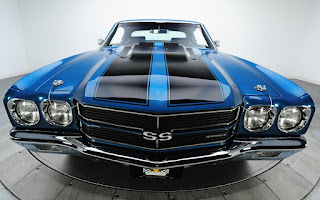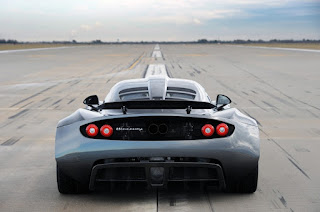Adaptive Cruise Control System
To be an active
member in the productive sector, you need to reach on time to your workplace.
But with the increasing amount of automobiles, the traffic has also increased.
So it is hard to cope up with slow-moving traffic when you are late. As a
result, the number of accidents happening are also a way high than ever. To
curb this, an AI called Adaptive Cruise Control System was developed.
Adaptive Cruise
Control (ACC) is an automotive feature that allows a vehicle's cruise control
system to adapt the vehicle's speed to the traffic environment. A radar system
attached to the front of the vehicle is used to detect whether slower moving
vehicles are in the ACC vehicle's path. The driver sets the maximum speed —
just as with cruise control — then a radar sensor watches for traffic ahead,
locks on to the car in a lane, and instructs the car to stay 2, 3, or 4 seconds
behind the person car ahead of it (the driver sets the follow distance, within
reason). ACC is now almost always paired with a pre-crash system that alerts
you and often begins braking.
For an
instance, If a slower moving vehicle is detected, the ACC system will slow the
vehicle down and control the clearance, or time gap, between the ACC vehicle
and the forward vehicle. If the system detects that the forward vehicle is no
longer in the ACC vehicle's path, the ACC system will accelerate the vehicle
back to its set cruise control speed. This operation allows the ACC vehicle to
autonomously slow down and speed up with traffic without intervention from the
driver.
The method by
which the ACC vehicle's speed is controlled is via engine throttle control and
limited brake operation.
TYPES
·
LASER-BASED SYSTEM do not
detect and track vehicles in adverse weather conditions nor do they reliably
track dirty (and therefore non-reflective) vehicles. Laser-based sensors must
be exposed, the sensor (a fairly large black box) is typically found in the
lower grille, offset to one side.
·
RADAR-BASED SENSOR can be hidden
behind plastic fascias; however, the fascias may look different from a vehicle
without the feature. For example, Mercedes-Benz packages the radar behind the
upper grille in the center and behind a solid plastic panel that has painted
slats to simulate the look of the rest of the grille.
·
SINGLE RADAR SYSTEM are the most
common. Systems involving multiple sensors use either two similar hardware
sensors like the 2010 Audi A8 or the 2010 Volkswagen Touareg, or one central
long range radar coupled with two short radar sensors placed on the corners of
the vehicle like the BMW 5 and 6 series.
A more recent development is the BINOCULAR COMPUTER VISION SYSTEM,
such as that introduced to the US market in model year 2013 by Subaru. These
systems have front-facing video cameras mounted on either side of the rear view
mirror and use digital processing to extract depth information from the
parallax between the two cameras' views.
Assisting systems
Radar-based ACC
often feature a precrash system, which warns the driver and/or provides brake
support if there is a high risk of a collision. Also in certain cars it is
incorporated with a lane maintaining system which provides a power steering
assist to reduce steering input burden on corners when the cruise control
system is activated.
Multi-sensor systems
Systems with
multiple sensors can practice sensor fusion to integrate the data from to
improve safety and/or driving experience. GPS data can inform the system of
geographic features such as a freeway off-ramp. A camera system could notice
driver behavior such as brake lights and/or a turn signal. This could allow a
following car to interpret a turn signal by an exit as not requiring the
following car to slow down, as the leading car will exit. Multi-sensor systems
could also take note of traffic signs/signals and not, e.g., violate a red
light while following a vehicle that crossed before the signal changed.
Predictive systems
Predict systems
modify speed based on predictions of other vehicles' behavior. Such systems can
make earlier, more moderate adjustments to the predicted behavior, improving
safety and passenger comfort. One example is to predict the likelihood of a
vehicle in a neighboring lane moving in front of the controlled vehicle. One
system predicts a lane change up to five seconds before it occurs.
ADVANTAGES & DISADVANTAGES OF ACCS
·
ADVANTAGES
1. The driver is relieved from
the task of careful acceleration, deceleration and braking in congested
traffics.
2. A highly responsive traffic
system that adjusts itself to avoid accidents can be developed.
3. Since the breaking and acceleration are done
in a systematic way, the fuel efficiency of the vehicle is increased.
·
DISADVANTAGES
1. A cheap version is not yet
realized.
2. A high market penetration is
required if a society of intelligent vehicles is to be formed.
3. Encourages the driver to
become careless. It can lead to severe accidents if the system is
malfunctioning.
4. The ACC systems yet evolved
enable vehicles to cooperate with the other vehicles and hence do not respond
directly to the traffic signals.
Helpful Video Links
Image courtesy :- Google Inc.





Comments
Post a Comment